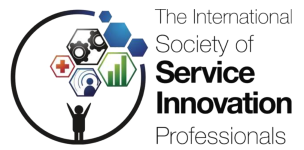Article below written by Martha G. Russell
Martha G. Russell Ph.D. is Emerita at Stanford University, former Executive Director of mediaX at Stanford University with the Human Sciences and Technologies Advanced Research Institute (HSTAR), Founder and President of Connect Consultants International, Inc., and Founder and President of Tahoe Music Alive.
“What is my community?” asked a participant in the large statewide study conducted by my consulting team; the year was 1988. The results are still relevant, especially to the science of service systems.
That study was part of a national effort, under Title XX State Block Grants, to identify how to make services to children and families more community-based and more family-focused. Following 100 focus groups of beneficiaries of the Minnesota Department of Family and Children’s Services, each conducted by specially trained local representatives of various service groups (families of incarcerated individuals, care-givers for handicapped and home-bound adults, support groups for substance abuse, etc.), 8 community forums, and a USENET survey of Minnesota clergy standardized on Netscape 1.0 (
The study sought to understand “family” and “community” in the context of service delivery to urban and non-urban Minnesota lifestyles.
Respondents had a hard time with questions about community. “What do you mean by community? Does it mean where I live? Does it mean where I work? Does it mean where I leave my children for daycare?”
As my team explored how service recipients thought about “community,” we learned several important things about the ecology of Minnesota family and children’s service systems. First of all, the delivery of various state-supported services was compartmentalized by professional expertise, requiring recipients to spend great quantities of time to discover and access each service individually. It was not surprising that the resource of time was in very short supply for most service recipients. Secondly, the most critical services clustered into two categories: preventative services – which helped families leverage local resources and cope with challenging circumstances; and remedial services – which were oriented to solving crises and restoring families’ coping mechanisms. Most importantly, access points for most services were located at county government offices, open only during regular office hours on weekdays, when it was extremely difficult for recipients to arrange visits.
None of these findings were surprising to us. However, these realities of recipients’ lifestyles had not been integrated into the organization or delivery of services by the Department.
The feedback from our USENET survey to clergy provided additional insights for improving service delivery. According to them, faith-based organizations were often the first point of contact for people needing assistance, and many faith-based organizations sponsored outreach activities that sought out, as well as offered help, to people in distress and to others at times of life changing events. Faith-based organization defined “community” to include the network of locations and relationships that encompassed residence, care services AND workplaces. This insight raised the question of “addressability.” How could people find out about preventative and remedial services? How could accessibility to existing services be improved?
Our report to the Department recommended that awareness of and access to preventative services could be enhanced by involving the local schools – a category of organizations administered by the State and consequently within jurisdictional purview, but previously outside the network of family and children’s services. (Of course, we also recognized the importance of faith-based organizations but due to separation of church and state could only encourage exploration of opportunities for collaboration.) We recommended that remedial services for families work closely with health care organizations – clinics, hospitals, etc. – because crisis and critical care interventions often signaled a need for further services.
The executive team of the overseeing Committee heard a summary of our report and quickly offered to take responsibility for its circulation across the committee. I had the strong sense that the report’s recommendations were so unexpected and disruptive that the report would simply be filed away, “checking the box” that it had been completed, and moving on with status quo. Through our research, we had heard from so many people about their NEED for changes in the way services were delivered that I could not let the findings be buried in a file cabinet. My team published the study and made sure that each member of the Committee received a copy.
BTW: I don’t recommend this procedure if your consulting practice depends on getting the next contract from the same organization. Communications with the client went dark quickly.
About one year later, it was announced that the Minnesota Department of Family and Children’s Services had been discontinued and its services had been reorganized. Preventative services for families were incorporated into the Department of Education, with dedicated responsibility for community outreach. Remedial services for families were incorporated into the Department of Public Health, crisis services. In both departments, a new category of intake workers was being selected and trained for “whole-family” response.
Twenty-five years later, the system is better understood.

https://www.rvphtc.org/2022/05/11/governmental-public-health-agencies/
The user-centered approach to needs identification has become widely popularized with the Design Thinking philosophy, now used globally. It’s absolutely necessary to understand both the interconnectedness of users’ needs, as well as the ecologies of service systems accessible to the users, in order to design and orchestrate effective service systems. This is as true for today’s digital services as it is for face-to-face services.
Go deep with questions and look for latent linkages where shared objectives can be stated.

